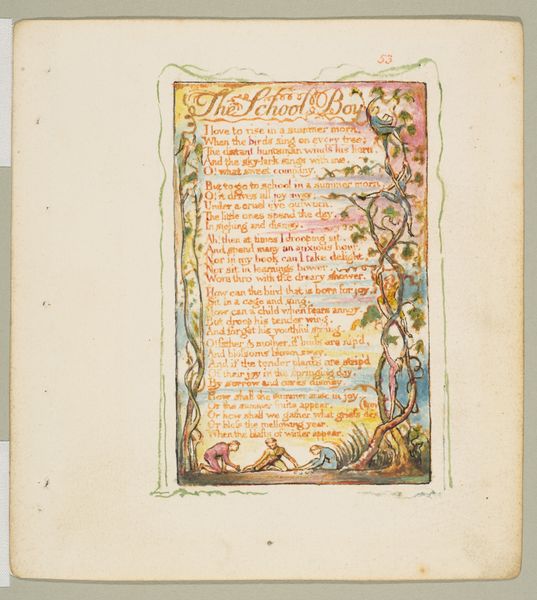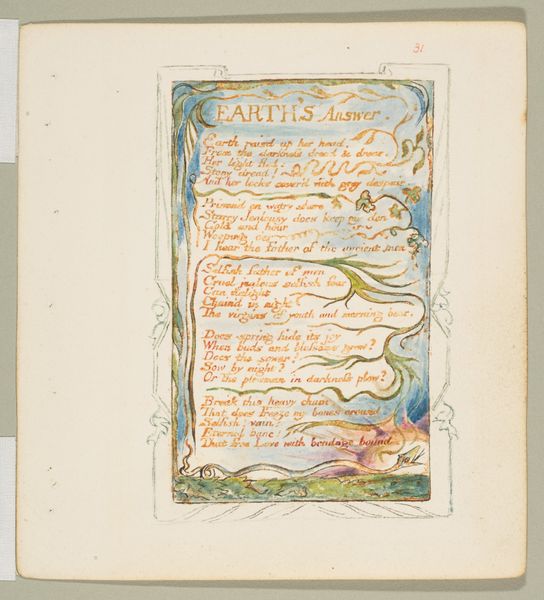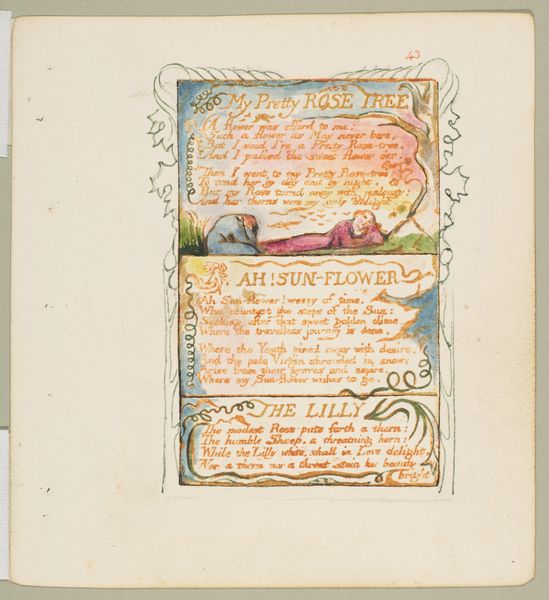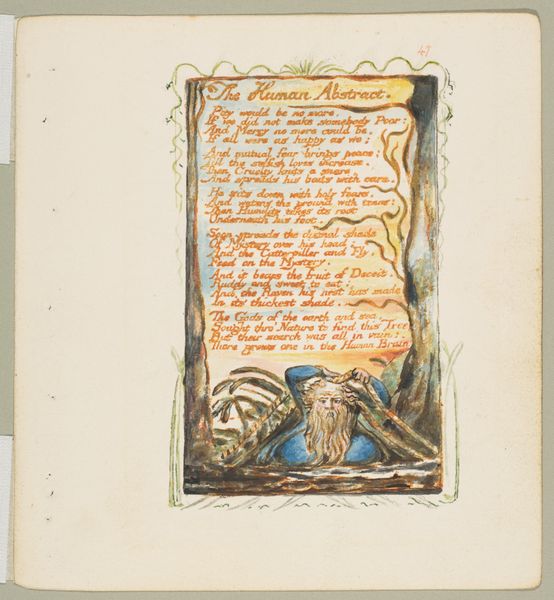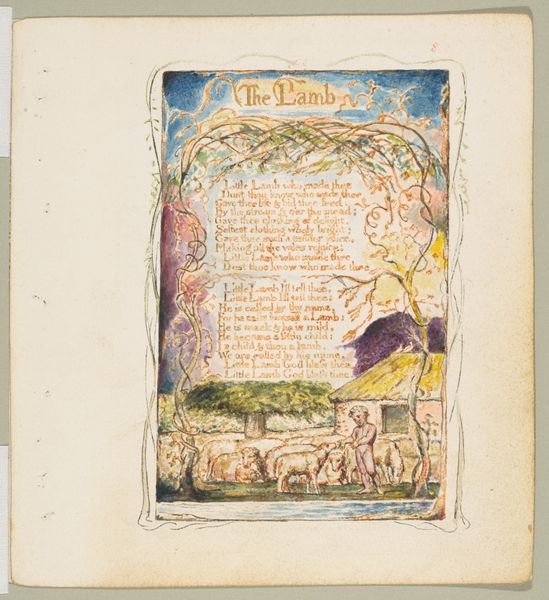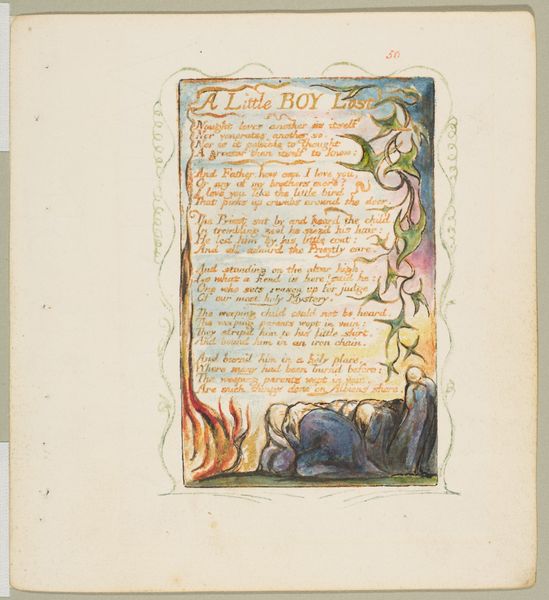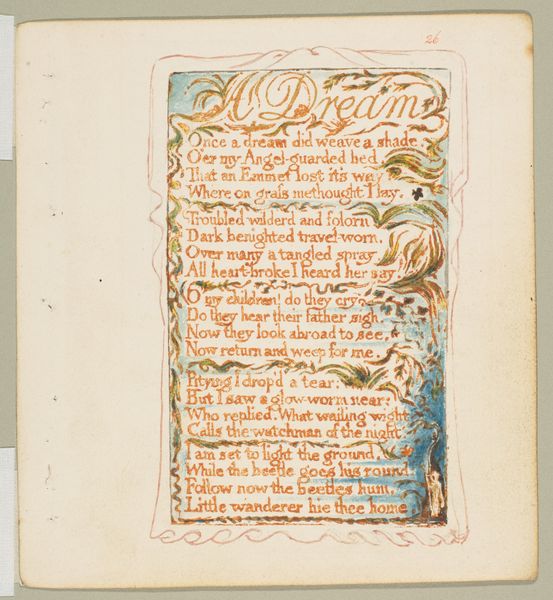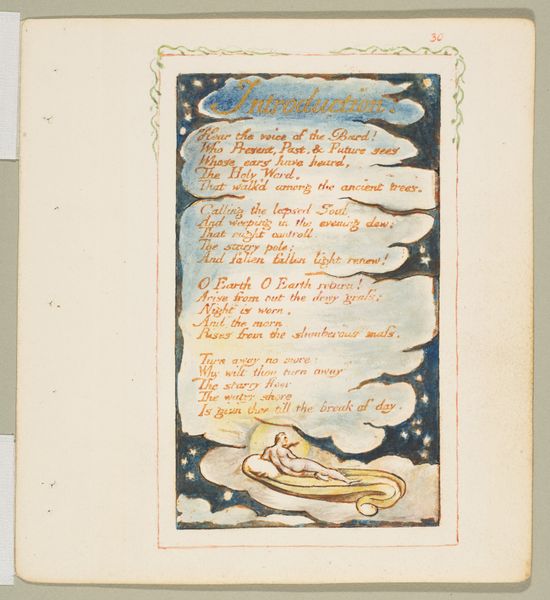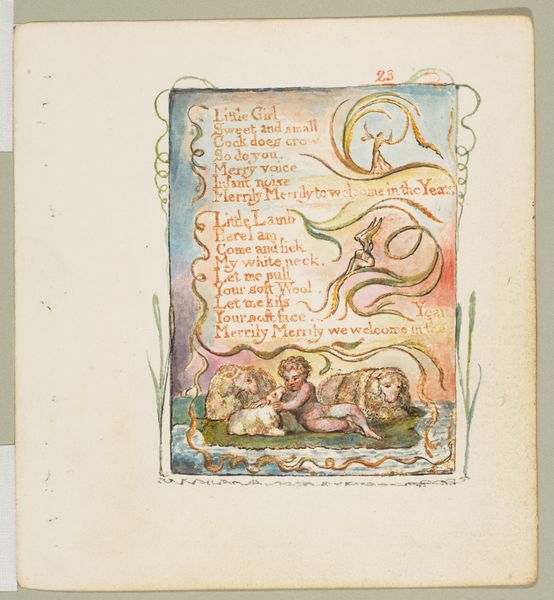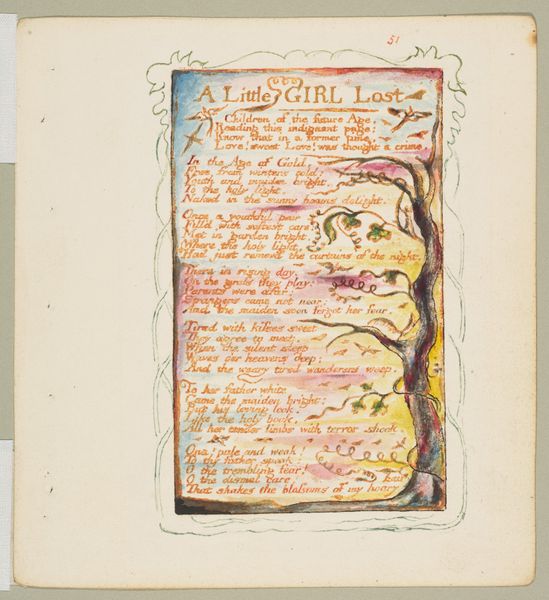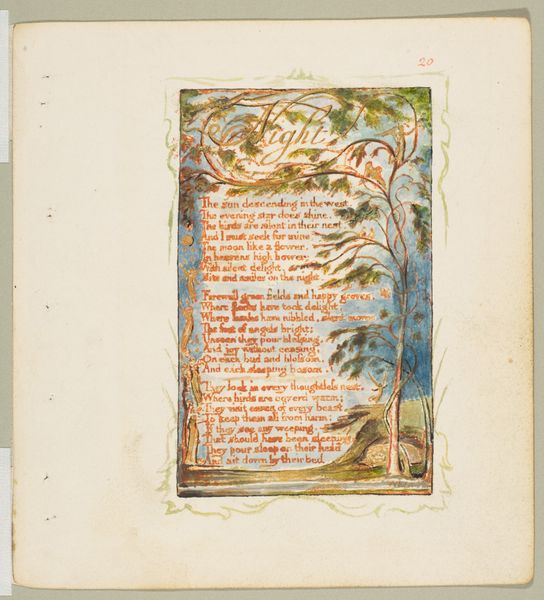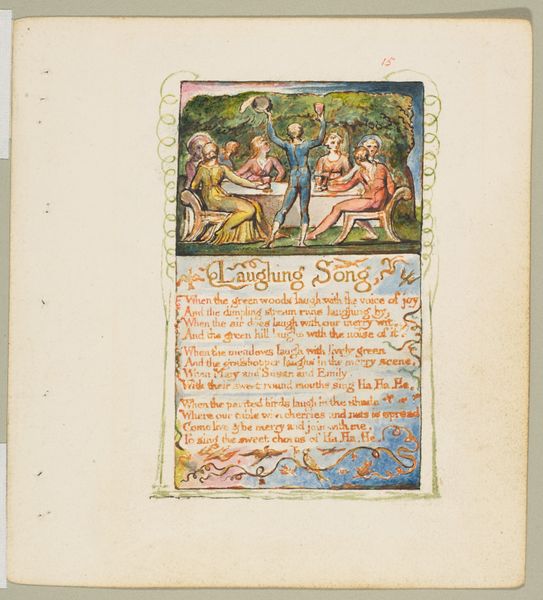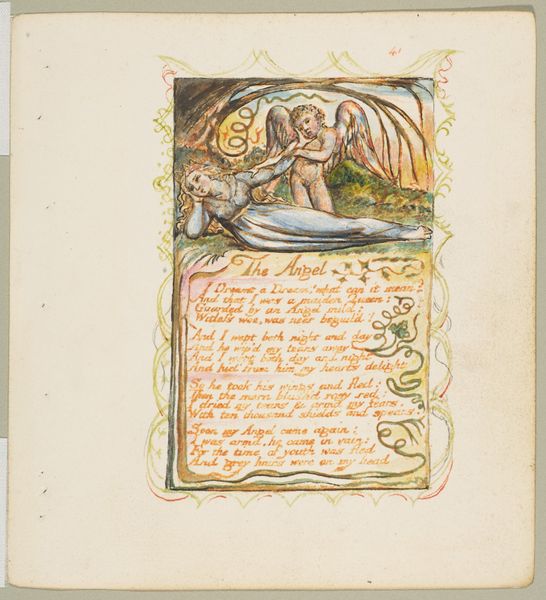
drawing, print, textile, paper, watercolor, ink
#
drawing
#
fairy-painting
#
water colours
#
narrative-art
#
ink painting
# print
#
landscape
#
textile
#
figuration
#
paper
#
watercolor
#
ink
#
romanticism
Dimensions: sheet: 6 3/16 x 5 9/16 in. (15.7 x 14.1 cm)
Copyright: Public Domain
Curator: Welcome to The Met. Today we’re looking at William Blake’s "Nurse's Song," created between 1789 and 1825. It’s a fascinating piece rendered with ink and watercolor on paper. What are your initial impressions? Editor: Visually, it’s quite delicate. The washes of color create a dreamlike atmosphere. I am also noticing how Blake merges text and image together in such an organic way. The borders especially seem to blend these two together with this wonderful ethereal quality. Curator: Indeed. From a materialist perspective, consider the context. Blake was a printmaker deeply invested in accessible art forms. The etching process allowed for wider distribution of his illuminated poems. What strikes me here is his attempt to create his own method of making prints in relief so he would maintain full control over the production and eliminate any type of commercial mediation. Editor: Absolutely, and beyond that material production process, let’s consider form and composition. Note how the flowing lines and soft hues contribute to a sense of tranquility. Yet, there's also a naivete in the figuration that is so captivating. The forms feel more symbolic rather than an attempt at a classical rendering. Curator: I’d say Blake's use of color, primarily muted greens, blues, and yellows, also adds to the atmosphere, evoking a sense of pastoral calm and harmony and this could perhaps be because of the time period when the print was made? The end of the eighteenth century, the romantic era. The print has some similarities to landscape painting, Editor: Precisely, we must ask how the landscape interacts with text here? The written portion also seems to be quite interesting to read, the last verses describe some form of joyous return and an echoing across the land. Are there implications that childhood laughter echoes the return to the past or some spiritual truth? Curator: An interesting observation that pushes the narrative of innocence beyond the merely idyllic to a higher plain, or what can also be seen as a sort of "coming of age" of the spirit. Editor: Well, considering form and content in tandem here opens up some fascinating points to be made. I’m finding more beauty and complexity in this relatively small work on paper than I anticipated! Curator: Yes, by understanding the interplay between materials, social context, and the aesthetic qualities, we gain deeper insight into Blake’s artistic vision.
Comments
No comments
Be the first to comment and join the conversation on the ultimate creative platform.
